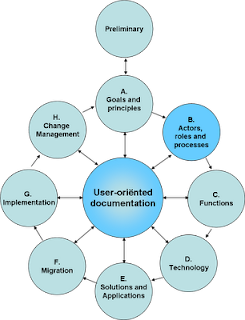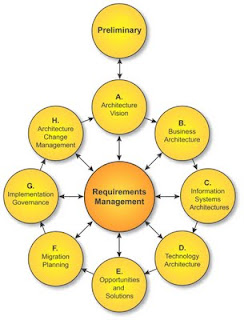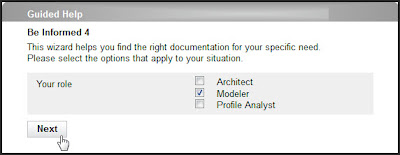Using a standard notation method for audience and tasks analysis
 In the previous posts I have talked about the advantages of having a widely accepted framework for technical communication, just like ICT Architects have. This Technical Communication Framework (TECOF) could be our equivalent for TOGAF.
In the previous posts I have talked about the advantages of having a widely accepted framework for technical communication, just like ICT Architects have. This Technical Communication Framework (TECOF) could be our equivalent for TOGAF.The similarities between Technical Writing and ICT Architecture don't stop at the overview level, we can also learn from the model-driven approach from ICT Architects towards the detail levels of a solution and its context. One of the areas where we can benefit from this approach would in my opinion be the audience and tasks analysis, at the start of a technical communication project.
A structured approach to audience and task analysis
Archimate is an 'architectural language'. It provides ICT Architects with a vendor-independent set of concepts, including a graphical representation, that helps to create a consistent, integrated model which can be used in for instance TOGAF's views.
The business layer in Archimate neatly corresponds with the Business Architecture Component in TOGAF.
In the Archimate business layer we create a model of the business context in which our to be implemented solution or change will take place. The following concepts are used:
- Actor: organizational identity capable of actively performing behavior. Examples of actors are employees, departments, and business units. In a more complex environment customers or groups of customers (in branches) can also be seen as actors.
- Business role: a named specific behavior of a business actor participating in a particular context.
- Business function: a unit of internal behavior that groups behavior according to, for example, required skills, knowledge, resources, etc., and is performed by a single role within the organization.
- Business process: a unit of internal behavior or collection of causally-related units of internal behavior intended to produce a defined set of products and services.
- Business service: the externally visible functionality, which is meaningful to the environment and is realized by business functions and business processes.

How to use this approach as a technical communicator?
As technical communicators we are familiar with the concepts of actors, roles, functions and processes, but the thing is we never call it that way.
- An actor is to us the audience, defined as a group of people, an organization or group of customers.
- The role is in fact what we could describe as 'the user'; a particular type of person within the audience.
- Processes and functions are what we would call tasks and activities.
- The Service is for us a goal-related set of tasks and activities, used as an umbrella for our task-oriented descriptions.
With this simple contextual diagram we can create an overview of our audiences, user types, activities and tasks and relate these to each other. During the actual writing of the documentation, we can benefit from this knowledge.
Create models instead of writing reports
There is no point in writing down long reports about the composition of our audiences. In my opinion the goal of doing an audience and task analysis has always been to document some context information to benefit from it as a writer. No customer or colleague would ever ask me for this document. Can we then save ourselves the trouble of documenting our audience and tasks analysis at all?
Let's put it this way: Say you have made some wrong assumptions at the start of your project, based on information provided to you by your customer. How can you ever analyse the problem and solve it if you have never recorded it properly.
Creating models of the context - audiences, roles/types, tasks and activities - makes it easier to create a quick overview of relevant aspects, without the burden of writing a report that no one ever reads. The model is the information.
In my next articles I will get into more detail on how to use models to describe the context of your information and how we can actually use these models in our documentation. If all goes well I can even add some actual examples from my day to day work at Be Informed in it.



Comments